
Which is the image that flashes before your eyes when you think of the great Scottish highlands? Indeed, it is of the Bagpipe. As the name suggests, the Bagpipe is made from ‘bag’ and ‘pipes’ and belongs to the family of the wind instruments. Peasants, farmers and even gypsies were the earliest ones to play the Bagpipes. An outdoor musical instrument, it is seen more as a rustic and rural country side musical instrument. The Bagpipe can be traced to ancient civilizations and it eventually finds its home in the British Isles. According to the historical records, the Bagpipe is said to replace the loud–sounding trumpet on the battlefield. The melody of the Bagpipe creating soulful music was replaced by the one of battles, marches, gatherings, salutes and laments. Since a very long time, the Bagpipe has been played and continues to be played throughout Europe, Scotland, Ireland, Turkey, the Caucasus mountains, around the Persian Gulf, Northern Africa and some parts of North America. Let us learn more about Bagpipes.
A common outdoor musical instrument, Bagpipes may have been made by the peasants, farmers and gypsies as they had an easy access to the animal hides and skin from which the bag was made. The earliest of the Bagpipes may have been originated from Sumeria or China around 5,000 B.C. The oldest reference to Bagpipes is also found in Alexandria, Egypt in about 100 B.C and the instrument may have travelled through Europe along with the development of cultures. Both the Roman and the Greek depictions mention Bagpipes in the same period. However, with its illustrations in Geoffrey Chaucer’s Canterbury Tales and Shakespeare’s The Merchant of Venice, many forms of Bagpipes with versions for the common folk and more elaborate forms became a part of the royal courts.

A Bagpipe is made of a resonator bag and pipes. The melody pipe or chanter has finger holes which are played to produce tunes. Three other pipes have a bass and tenor pitch and are called drones. These drones produce single notes that are tuned to the chanter. The piper puffs air by mouth from a blowpipe which fills the bag. Due to the air pressure, the reeds vibrate in the chanter and the drones to produce one melody and three harmonies within one instrument. On squeezing, the bag supplies air due to which, the Bagpipe keeps playing its continuous sound. The sound produced by a Bagpipe is continuous as the bag is constantly filled by the piper and rhythmically squeezed to feed air into the chanter and drones. Music notes are arranged specifically for the Bagpipe as the range of the set of pipes is limited.
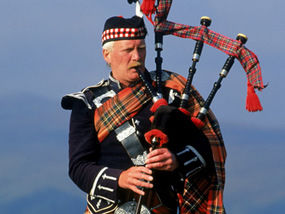
The components or parts of a Bagpipe include the resonator bag, the chanter, mouth piece, blowpipe, blowpipe valve, inside tenor drone, bass drone, outside tenor drone, drone cap, drone top, metal ferrule tuning pin, hemping tuning pin, cords, drone reed, chanter reed and five stocks.
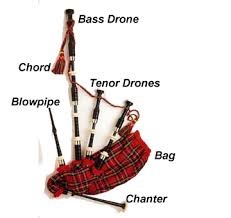
The pipes for chanter and drones are made from the African Blackwood, which is dried and cut into appropriate shapes by using a single flute drill, twist drill, reamer or gun drill to bore out cylindrical drones, chanters and the stock. The completed bore becomes the centre for turning the outside shape of each drone on a lathe. The ferrules (protective metal bands) are glued and projecting mounts are threaded on. Wax, oil, lacquer or varnish is used to polish these drones. However, there are two exceptions for the chanter made like drones. First, as the chanter is conical, it is step–drilled, reamed with single–flute tapered reamer; the proper boring of the cone is critical to the tone. Second, finger holes are drilled or milled into the turned bore. After the drilling of these finger holes, the chanter is finished to match the drones. The stocks are made with wood pipes and are simple straight holes with tie–in grooves at the bottom and are long enough to accommodate the reeds for the drones. The resonator bag is made from the animal hide and is folded, cut and glued temporarily. A leather welt is then hand stitched to the seam of the bag with double needles. The pieces comprising a Bagpipe are assembled by tying. The five stocks are tied into the bag by waxed linen, hemp or nylon. The chanter and drones are joined to the stocks and the reeds are added to complete the pipes. The final finish is given by smoothening with sand paper and the application of hot oil or wax to the wood pipes. Inserting the handmade reeds into the pipes completes the process of making a Bagpipe.
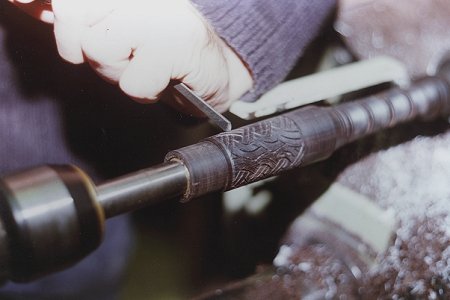
A Bagpiper is commonly identified with an iconic image of a Bagpiper in a tall hat and a skirt, playing the Bagpipe on a hill. However, the Bagpipes were used to play dance and music in Celtic cultures. Today, Bagpipes are found in many traditional genres of music ranging from the Irish music to traditional Turkish music, from Galician Celtic music to the Southern Asian music and are also employed in some military bands. A renewed interest in the native and folklore music is seeing a revival of the sound of Bagpipe in contemporary classical music ensembles as well as jazz, rock and pop music. The Bagpipes are very popular during festivals and parades.
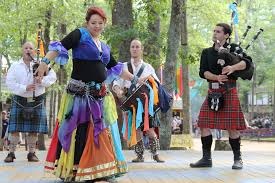
There are more than thirty types of Bagpipes. The most common is the Great Highland Bagpipe. Others include the Northumbrian small pipe, Scottish small pipe, Gaita Bagpipe from Spain, Zampogna from Italy and Cimpoi from Romania. The difference is in the number of drones and pipes.
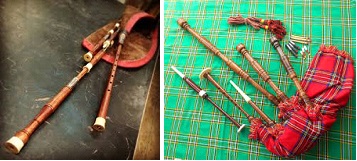
The most notable of the Bagpipers include King Edward VII and King Edward VIII of England. Other well known Bagpipers are Aaron Shaw, who plays the great highland Bagpipe; Susana Seivane Hoyo is a well known Galician Gaita player from Spain. Other notable Bagpipe players include Jack Armstrong (Northumbrian Small pipes) and Fred Morrison (Scottish Small pipes).
There are teachers available who teach how to play the instrument. Established players can be sought for guidance in any part of the world. Some beginners may learn to play in 8 weeks or a year whereas some may take more than a year. It depends on whether a beginner or a person is learning to play Bagpipe simply as a hobby or wants to become an expert Bagpiper. There are music schools in UK, USA, Germany and other European countries too.


